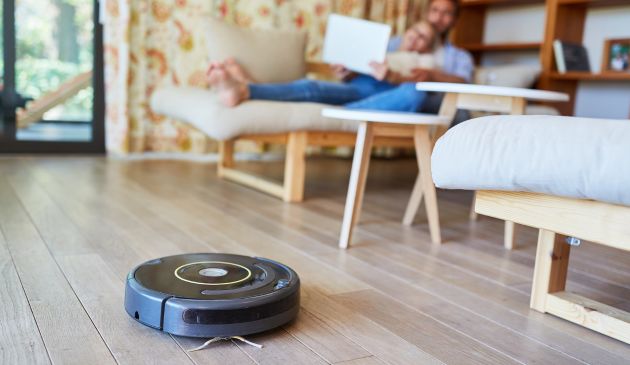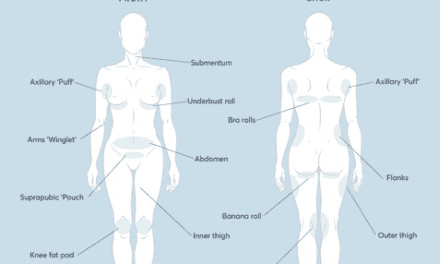
We’re Making Exercise Way Too Complex. Here’s What You Need To Know

*This is a collaborative post
If you look at traditional populations around the world, you often find that they have perfect physiques. What’s more, they never seem to engage in conscious exercise. Instead, their daily lives include sufficient movement to keep their minds healthy and bodies lean.
But ever since the 1950s, we’ve collectively been making exercise more complicated than it needs to be. It’s actually very simple: just move! But we like to break it down into smaller and smaller parts, thinking that they matter. For the most part, they don’t. It’s a bit like rearranging the deck chairs on the Titanic. It isn’t going to have much of an impact on the final result.
Interestingly, workouts today have also become much more aggressive. Historically, people didn’t try to use exercise to beat themselves within an inch of their lives. Instead, it was more about relaxation, calming the mind and stretching the body. Early inspiration came from yogic practices in India.
Over time, though, things have changed. Workouts are becoming more intense. And people believe that they have to continually push themselves to the limit to get results. For the most part, this simply isn’t true. The approach regular people should take is markedly different from what athletes should be doing.
We now have more science about exercise than ever before. But hardly any of it has changed what we know about fundamental fitness. It has been obvious since the 1950s that people who exercise more are leaner, happier and healthier overall.
In this post, we tackle exercise complexity and boil it down to the simplest lessons.
Regularly Doing Extreme Workouts Is A Bad Idea
More exercise is better, right?
Well, no actually. Any top athlete or fitness enthusiast will tell you that. It turns out that the body requires a lot of rest – more than the average person can really accept. It can take some people more than a week to recover from a hardcore CrossFit session.
When it comes to exercise, try to adopt the 80/20 approach. Make 80 percent of your workouts light and easy and then really go for it 20 percent of the time. For instance, you might go cycling four times a week and then do hill sprints once per week. Most of the time you are getting gentle exercise, but you’re also stressing your body with some more extreme challenges.
If you train too hard, you are much more likely to injure yourself. Athletes run into this issue all the time. They push their bodies to the point where they can no longer adapt to the stress. Eventually they weaken and, eventually, they can’t function at the highest level. Performance levels drop while the body recovers.
Exercise Doesn’t Make You Lose Weight
When it comes to losing weight, exercise is quite pathetic – at least compared to diet. But that doesn’t mean it’s useless. Research shows that while exercise probably won’t allow you to shed fat on your hips, it will help you keep it off once you finish dieting.
Most people develop what scientists call “compensatory behaviors” when they start working out. They are much more likely to give themselves permission to snack if they’ve just exercised compared to if they haven’t. This process then counteracts the effects of exercise.
It’s not all about weight loss, though. Exercise is beneficial for all kinds of other reasons. It protects people against disease, improves the quality of sleep, and boosts energy. It can even enhance cognition at work, boosting job performance.
Move Naturally
Moving naturally is important. We always want to work with the biomechanics of our bodies. Going against them will eventually lead to health issues.
Natural movements are types of exercise which we evolved to do. There’s nothing awkward about them. And doing them is much less likely to lead to injury. Good examples include running, swimming and cycling.
However, there are also a range of movements that could potentially cause harm. For instance, people who want to protect their shoulders should do push ups instead of dips. You should also avoid behind-the-head pull downs and front squats, since both these movements work against the natural mechanics of the body.
Moving naturally comes, well, naturally, so there’s nothing complicated about it. Just adopt movement patterns that feel good for you.
Exercise In Different Ways
Don’t stick to the same movement patterns each time you exercise. Instead, chop and change them as much as you can. Vary both the exercises themselves, and the intensity with which you do them.
Exercise is subject to the principle of diminishing returns. At the start, the gains you make are tremendous. You often find that just a little exercise moves you towards your goals rapidly.
Over time, though, progress slows. You find that you’re having to put more hours in at the gym to get the same results. That’s because the body doesn’t work on an absolute basis – it works on a percentage basis.
Let’s say, for instance, that you’re one hundred pounds overweight and you’d like to get down to your ideal weight. If you lose 10 pounds in the first month, you’re 10 percent on the way to your target. Now let’s say that you lose 10 percent of the remaining 90 pounds in the next month – that’s only 9 pounds. So at the end of month two, you’re 81 pounds overweight.
Now let’s do the same thing again. In month three, you lose 10 percent of your excess weight – around 8 pounds – bringing you within 73 pounds of your ideal weight.
You can hopefully see where this process is going. By the time you’re 10 pounds overweight, a 10 percent loss of your excess weight is just 1 pound. Thus, progress is much slower.
To counteract this effect, you can try exercising in different ways. By mixing things up, you’re often able to push past diminishing returns and use your exercise time as wisely as possible.
Furthermore, you don’t actually have to spend hours in the gym to get results. Research shows that muscles will increase in size and strength from quick sets. You don’t have to do a large number of repetitions. In many cases, one set is sufficient.
The same goes for cardiovascular training. Spending an hour on the treadmill isn’t necessary. You can often get superior results by doing high-intensity interval training for three to five minutes. By going all out, you stress your body, encouraging it to find ways to come back stronger and faster.
Cardio Will Help You Live Longer
We’ve known since the 1960s that people who do a lot of cardiovascular exercise tend to live longer. It turns out that the shearing action of blood against artery walls as you run or cycle helps to keep them healthy. It stops the buildup of plaque and makes them more elastic so that they can cope with changes in blood pressure.
But it isn’t just the effect of cardio on the heart that makes the difference. Researchers now believe that the more cardio you do, the lower your risk of dying from anything.
There’s also a dose-response relationship. This means that the more exercise you do, the less likely you are to develop a chronic disease. 30 minutes per day is good, but 60 minutes is a lot better.
In summary, exercise doesn’t need to be complicated. Our bodies are incredibly predictable when it comes to their response to physical activity. So long as we keep moving, they will remain healthy. It’s really that simple.


















































